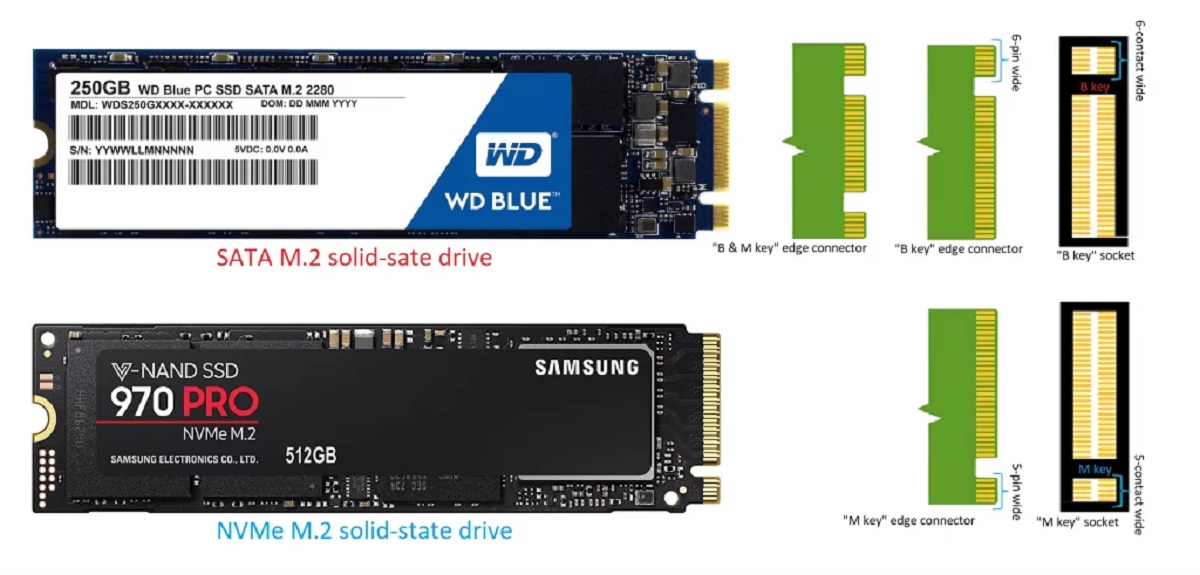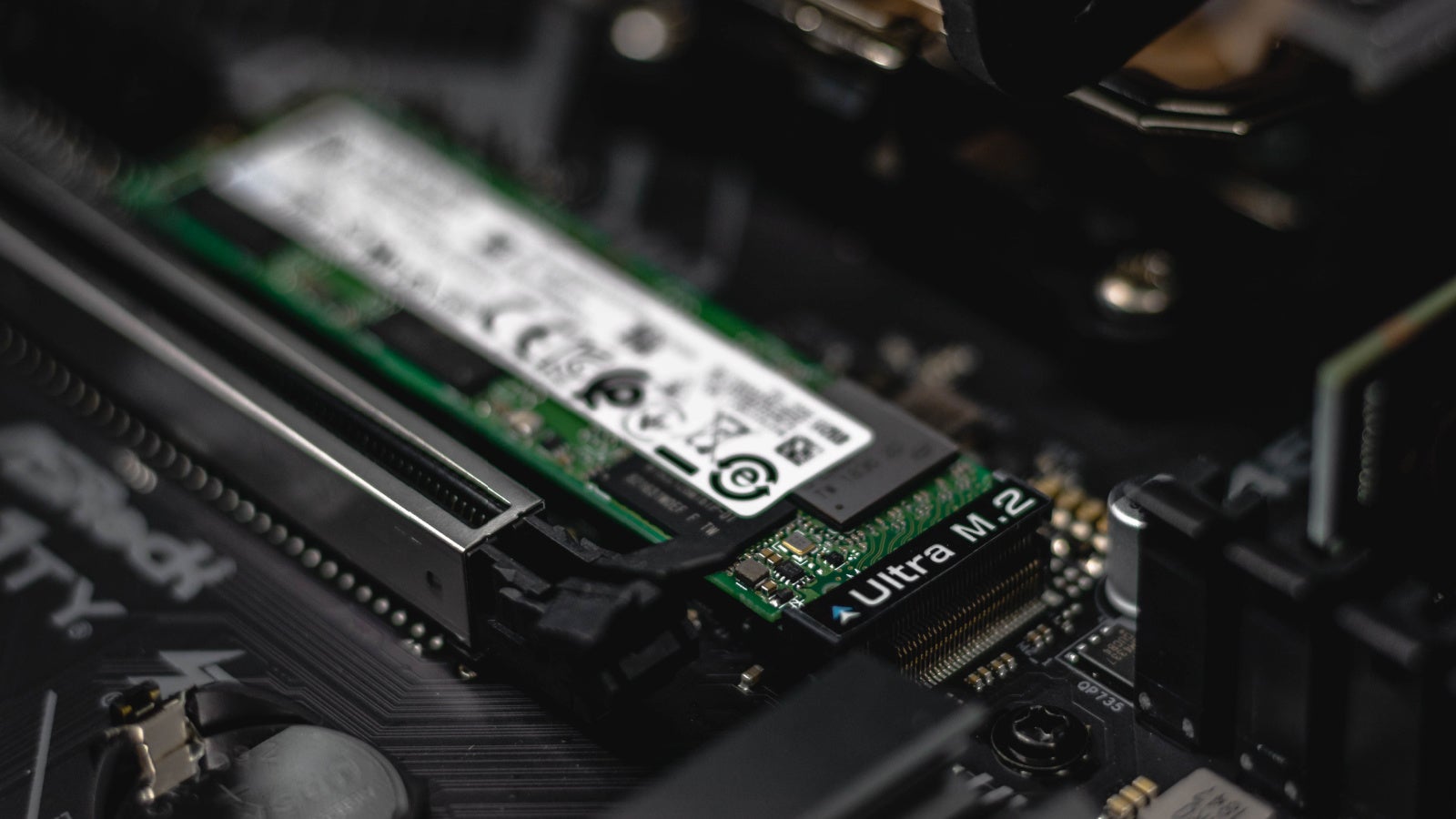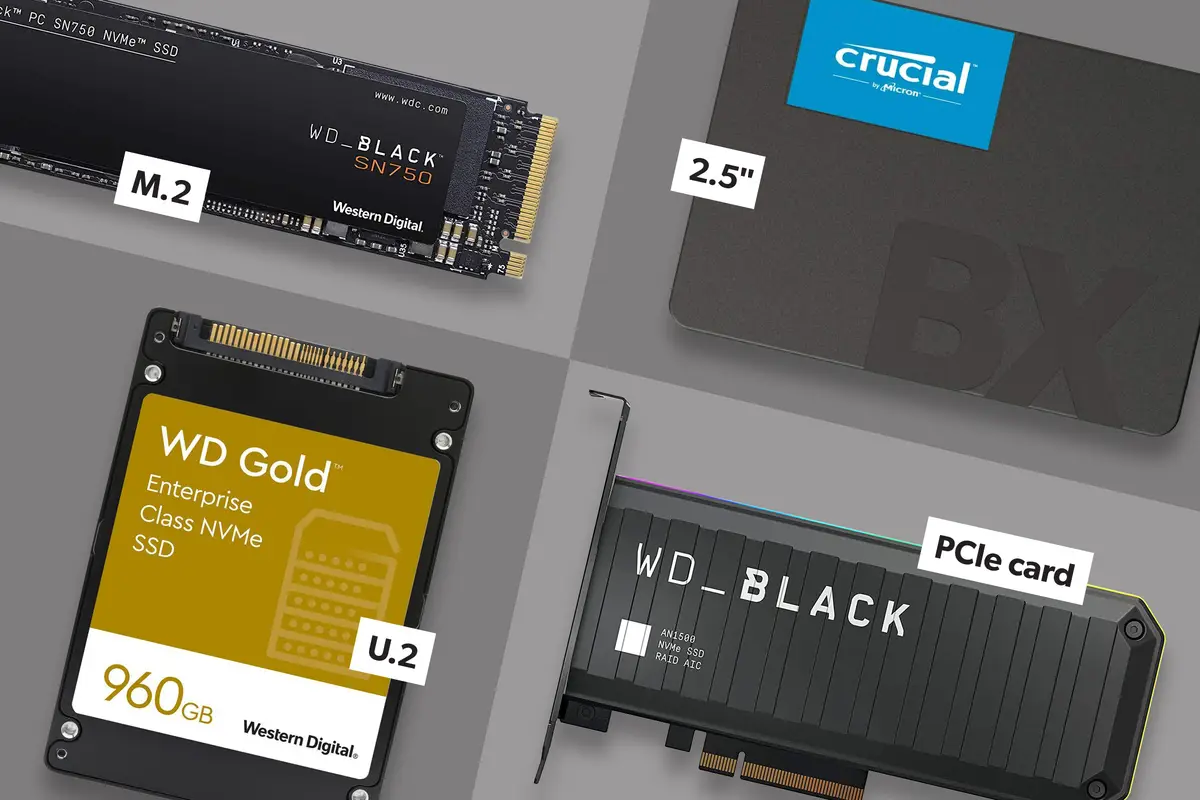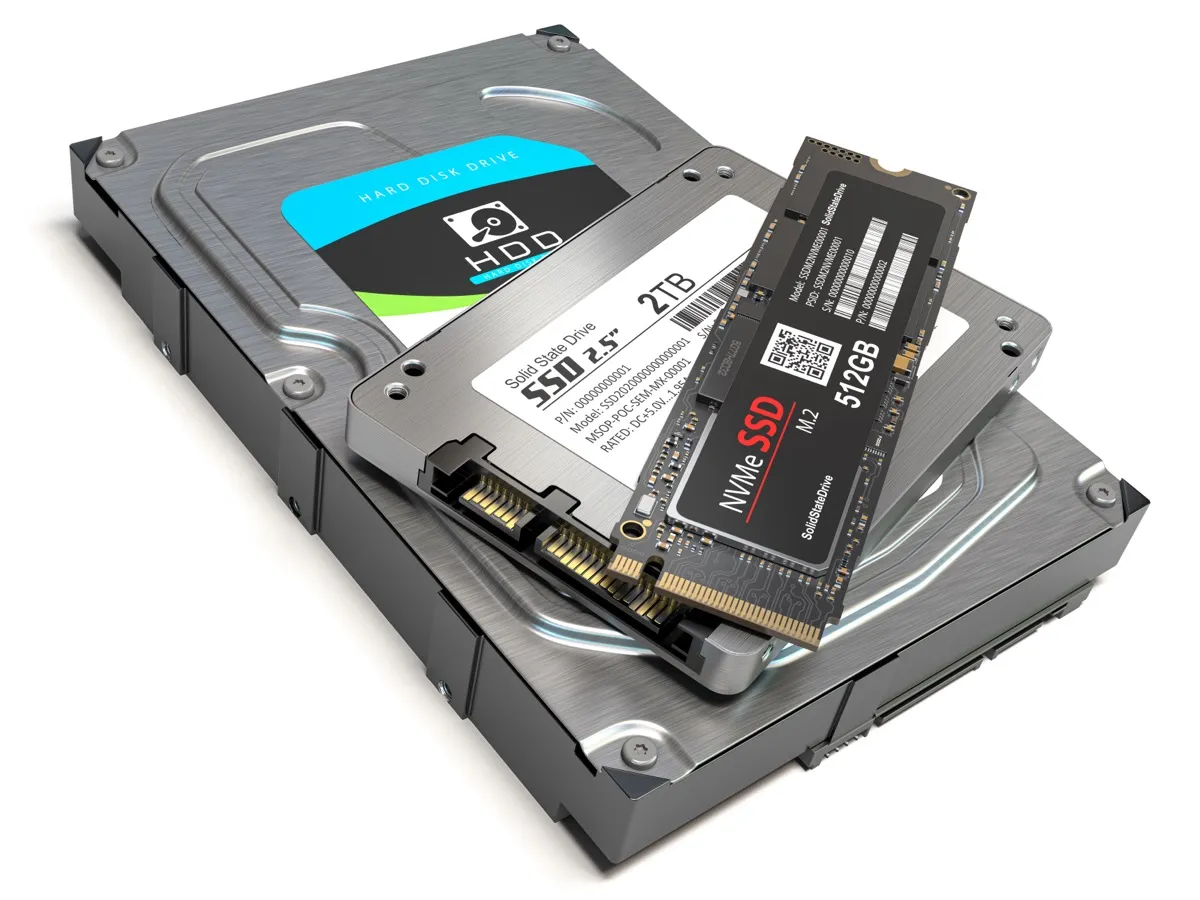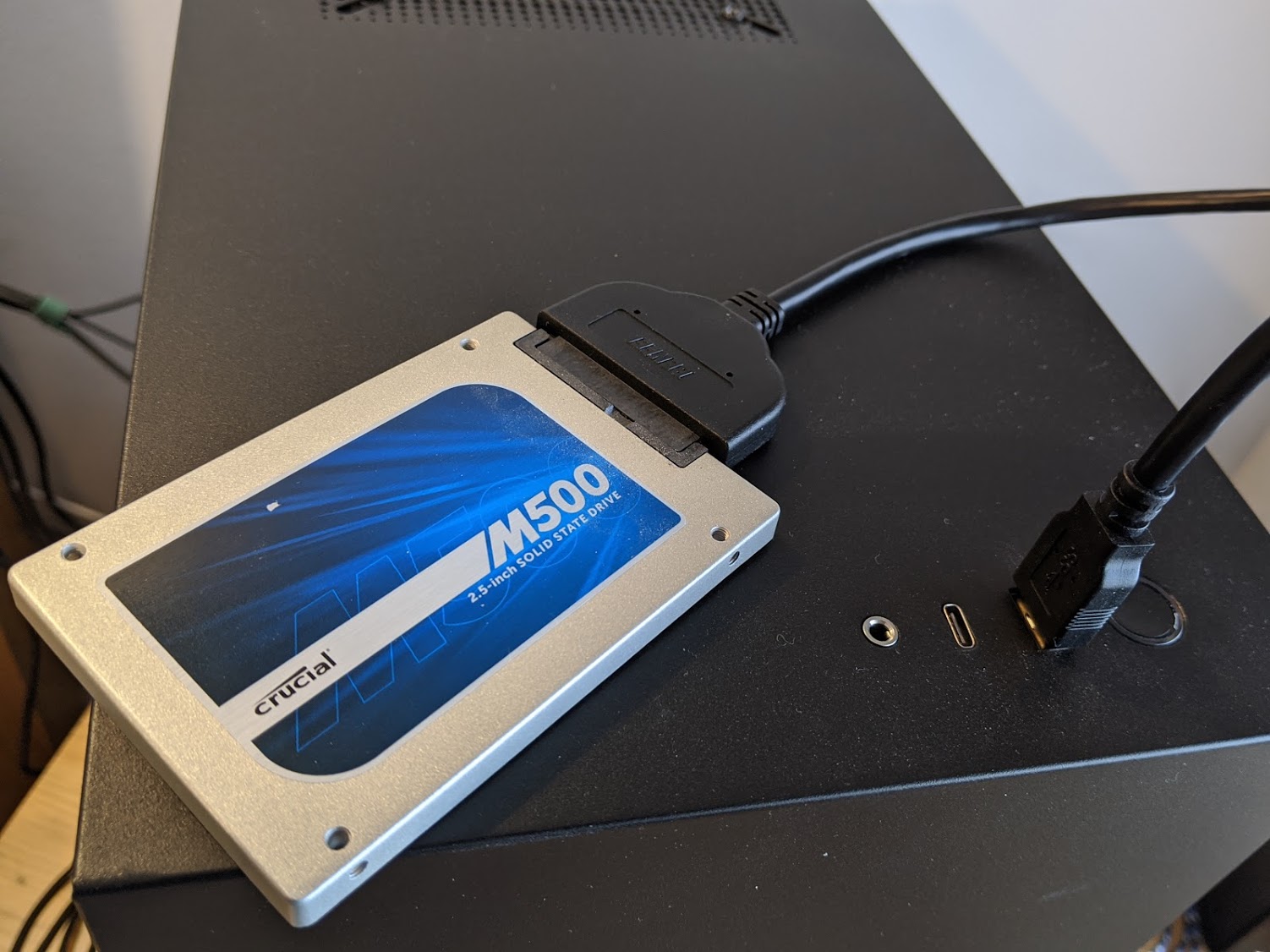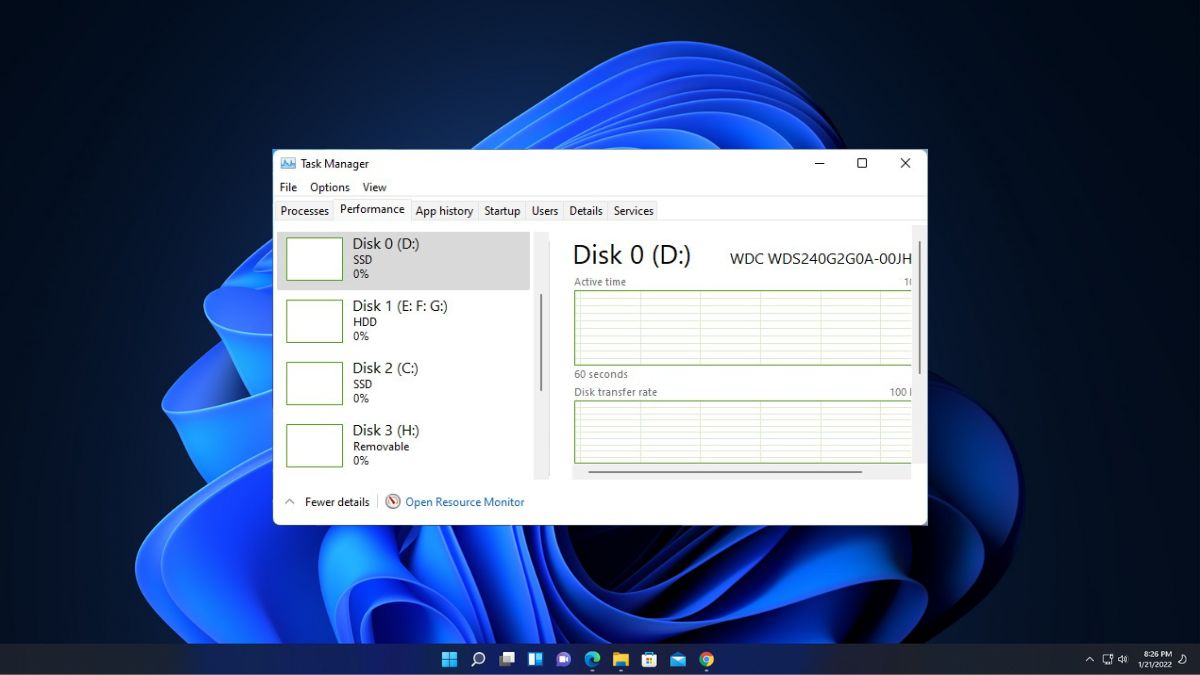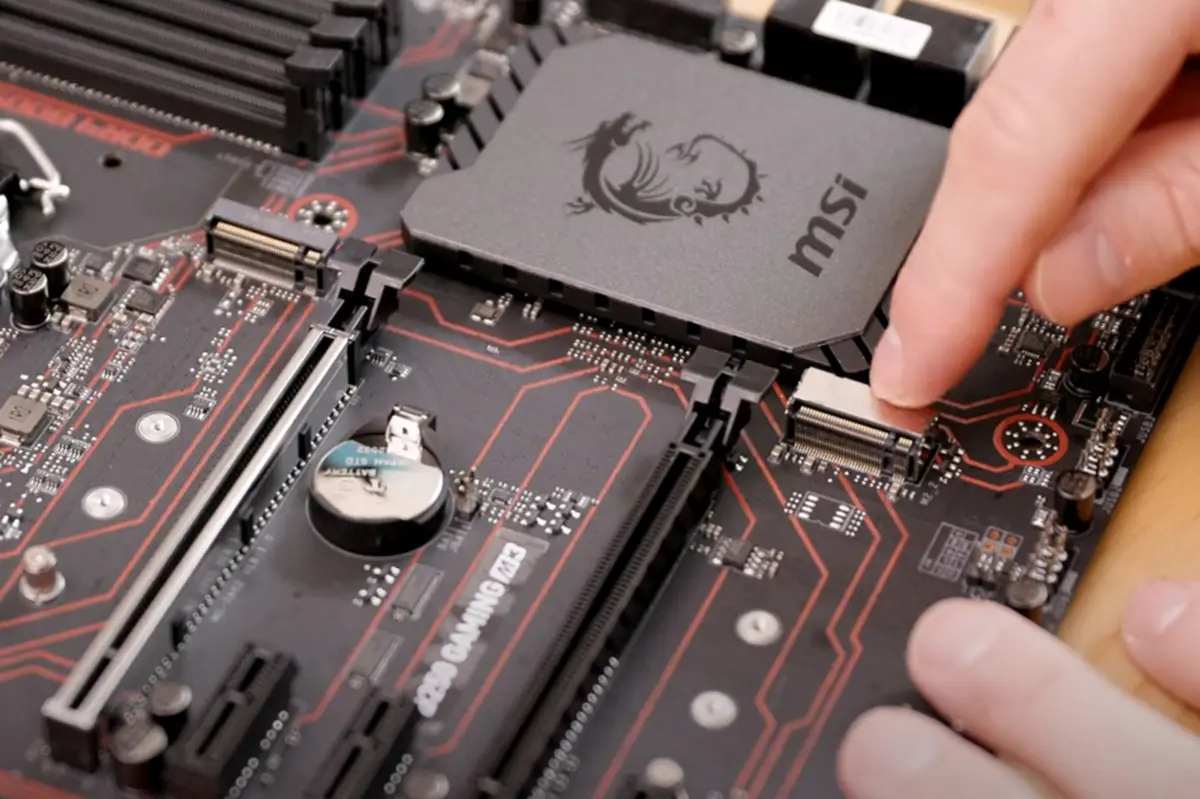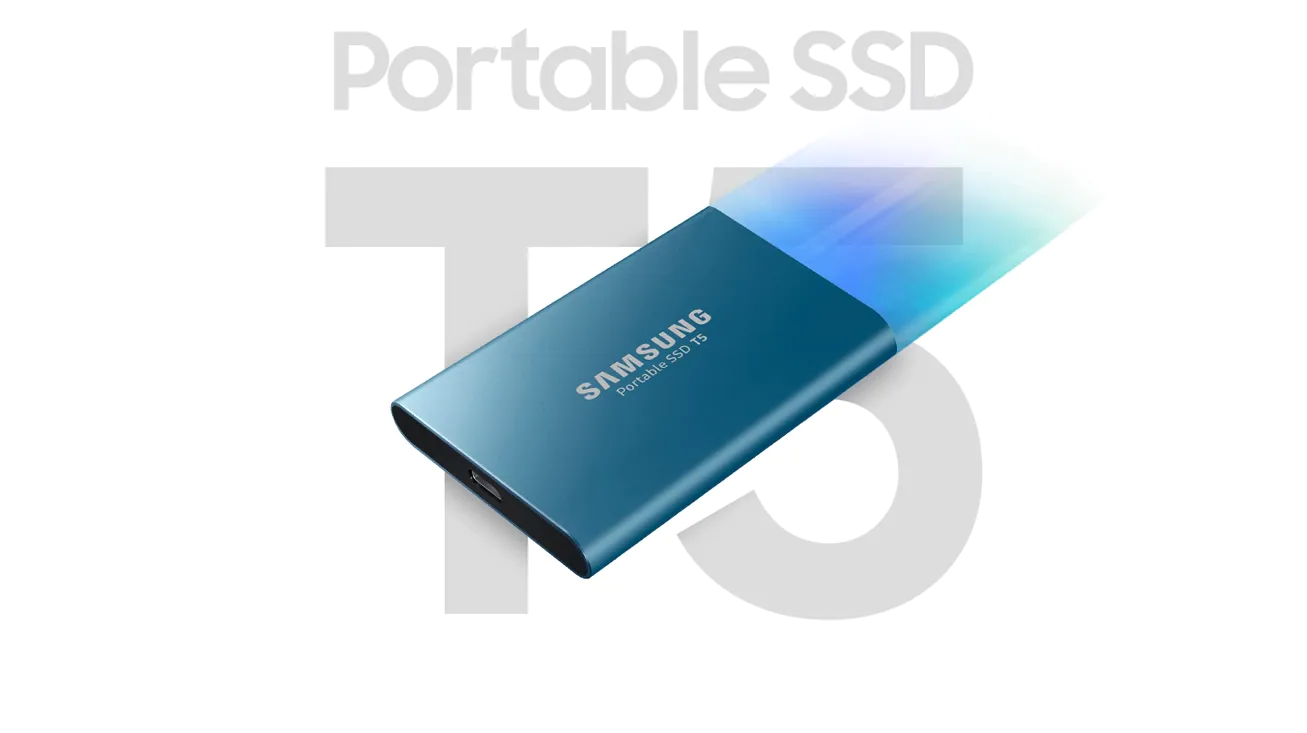Introduction
When it comes to upgrading your computer’s storage capabilities, one option that has gained significant popularity is the Solid State Drive (SSD). SSDs offer faster data access, improved performance, and enhanced reliability compared to traditional hard drives. However, before investing in an SSD, it is essential to determine if it is compatible with your system. In this article, we will guide you through the various factors to consider when evaluating the compatibility of an SSD.
Upgrading to an SSD can significantly improve your system’s responsiveness and overall performance. However, compatibility issues can arise if you are not careful. You need to ensure that the SSD matches the specifications and requirements of your computer.
From checking the interface to verifying compatibility with the operating system, there are several critical factors to consider. We’ll take a closer look at each factor in this guide, providing you with the information needed to make an informed decision when choosing the right SSD for your computer.
By understanding the compatibility requirements, you can avoid any potential pitfalls during the installation process, ensuring a smooth and successful upgrade to an SSD. Before delving into the technical details, let’s start by understanding what exactly an SSD is and what sets it apart from traditional hard drives.
An SSD, or Solid State Drive, is a type of storage device that stores data electronically using flash memory. Unlike mechanical hard drives, SSDs have no moving parts, resulting in faster data access times and improved durability. This difference in technology not only enhances performance but also reduces the risk of data loss due to shocks or vibrations.
Now that we have a basic understanding of SSDs, let’s explore the various factors you need to consider to determine if an SSD is compatible with your system. These factors range from the physical connection and form factor to compatibility with the motherboard, operating system, and other hardware components.
Understanding SSD (Solid State Drive)
A Solid State Drive (SSD) is a storage device that uses flash memory to store data. Unlike traditional hard drives that use spinning disks and mechanical parts, SSDs have no moving components, which makes them faster, more reliable, and less prone to mechanical failure. They have become increasingly popular due to their superior performance and durability.
SSDs offer several advantages over traditional hard drives. One of the main benefits is the significantly faster data access speeds. Since there are no mechanical parts involved in reading and writing data, SSDs can retrieve and process information much more quickly than hard drives. This results in faster boot-up times, faster application loading, and overall improved system responsiveness.
In addition to speed, SSDs are also more resistant to physical damage. Because there are no spinning disks, there is a reduced risk of mechanical failure due to drops, shocks, or vibrations. This makes SSDs a reliable choice for laptops and other portable devices that are more prone to physical impacts.
Another advantage of SSDs is their energy efficiency. SSDs consume less power compared to traditional hard drives, resulting in longer battery life for laptops and reduced electricity usage for desktop computers. This not only benefits the environment but also reduces hardware operating costs in the long run.
SSDs are available in various capacities, ranging from a few hundred gigabytes to multiple terabytes. This allows users to choose an SSD with the capacity that best suits their needs. It is worth noting that SSDs can be more expensive per gigabyte compared to traditional hard drives, especially for larger capacities. However, the price gap has been closing over time as SSD technology becomes more accessible.
When considering an SSD, it’s important to keep in mind that not all SSDs are created equal. There are different types of SSDs, including SATA SSDs, NVMe SSDs, and PCIe SSDs. These types differ in terms of physical connectors and data transfer protocols, and their compatibility with your system depends on the available interfaces and motherboard support.
In the following sections, we will explore the various factors to consider when determining SSD compatibility. By understanding the technical specifications and requirements, you can ensure a seamless integration of an SSD into your computer system.
Checking the Interface
When it comes to SSD compatibility, one of the most critical factors to consider is the interface. The interface determines how the SSD connects to your computer and interacts with other components. There are primarily three types of interfaces for SSDs: SATA, NVMe, and PCIe.
The SATA (Serial ATA) interface is the most common and widely supported interface for SSDs. It provides a maximum data transfer rate of up to 6 gigabits per second (Gbps). SATA SSDs are compatible with most desktop and laptop computers that have SATA ports. These ports are typically labeled as SATA III or SATA 6Gbps. However, it’s important to note that even if your computer has an older SATA II (3Gbps) interface, it should still be compatible with a SATA III SSD, albeit at reduced speed.
NVMe (Non-Volatile Memory Express) is a newer and faster interface specifically designed for SSDs. NVMe SSDs use the PCIe (Peripheral Component Interconnect Express) interface to communicate with the computer’s CPU. This interface provides significantly faster data transfer speeds compared to SATA, with potential speeds of up to 32 gigabits per second (Gbps) or more. To use an NVMe SSD, your system must have an M.2 slot on the motherboard or a PCIe adapter card that supports NVMe drives.
PCIe SSDs, as the name suggests, use the PCIe interface to connect to the system. These SSDs offer extremely high data transfer speeds and are typically used in high-performance applications where speed is crucial. Like NVMe SSDs, PCIe SSDs require a compatible PCIe slot on the motherboard or a PCIe adapter card for installation.
Before purchasing an SSD, it is important to check your computer’s specifications and determine which interface it supports. You can consult the motherboard’s documentation or check the manufacturer’s website for detailed information. Ensure that the SSD you choose matches the interface supported by your computer.
Additionally, it’s worth noting that the physical form factor of the SSD should also match the corresponding slot on the motherboard. Common form factors for SSDs include 2.5-inch (for SATA SSDs), M.2 (for NVMe or SATA SSDs), and PCIe add-in cards (for PCIe SSDs). Ensure that the physical dimensions and connectors of the SSD align with the available slots on your motherboard.
By carefully checking the interface compatibility, you can ensure that the SSD you choose will be compatible with your computer, allowing for a seamless and hassle-free installation.
Compatibility with the Motherboard/Socket
When considering the compatibility of an SSD, it is essential to verify its compatibility with the motherboard or socket of your computer. The motherboard is the main circuit board that connects all the components of your computer, including the processor, memory, and storage devices.
Firstly, you need to ensure that the SSD’s interface is supported by the motherboard. As mentioned in the previous section, SSDs come with different interfaces such as SATA, NVMe, and PCIe. Check the specifications of your motherboard to see if it has the necessary ports or slots to accommodate the chosen interface of the SSD. Some motherboards may support multiple types of interfaces, giving you more flexibility in choosing the right SSD.
Furthermore, you need to check the socket compatibility if you are considering an NVMe or PCIe SSD. These SSDs typically require an M.2 slot or a PCIe slot on the motherboard. Make sure your motherboard has the correct socket and that it supports the desired SSD type. Consult the motherboard’s manual or visit the manufacturer’s website for detailed specifications.
In addition to the physical compatibility, you should also check if the motherboard supports the specific features and protocols of the SSD. For example, if you are considering an NVMe SSD, ensure that your motherboard supports the NVMe protocol for optimal performance. Similarly, if you are planning to use RAID (Redundant Array of Independent Disks) with multiple SSDs, ensure that your motherboard supports the RAID configuration you desire.
It’s worth noting that sometimes a BIOS or firmware update may be required to ensure full compatibility between the motherboard and the SSD. Check the motherboard manufacturer’s website for any available updates and follow the instructions to install them before installing the SSD.
Lastly, if you are unsure about the compatibility of the SSD with your motherboard, you can consult the manufacturer’s support or reach out to community forums where fellow users may have encountered similar compatibility issues. It’s always beneficial to gather information from trusted sources to ensure a seamless integration of the SSD into your computer system.
By verifying the compatibility of the SSD with your motherboard or socket, you can avoid any potential compatibility issues and ensure a smooth installation and optimal performance of your new SSD.
Compatibility with the Operating System
Another crucial consideration when determining the compatibility of an SSD is its compatibility with the operating system (OS) installed on your computer. The operating system acts as an interface between the user, the hardware, and the software applications. Different SSDs may have specific requirements or optimizations for different operating systems.
Most modern operating systems, including Windows, macOS, and Linux, have built-in support for SSDs, making compatibility less of a concern. However, it’s still important to ensure that your SSD is compatible with the specific operating system version you are using.
One aspect to check is the file system supported by the SSD and the operating system. The file system is responsible for organizing and managing data on the storage device. The most common file systems used by SSDs are NTFS for Windows, HFS+ or APFS for macOS, and EXT4 for Linux. Check the specifications of the SSD and verify that it supports the file system used by your operating system. In some cases, you may need to reformat the SSD to the appropriate file system before using it.
Additionally, some SSDs come with specific software or drivers provided by the manufacturer for optimizing performance or enabling additional features. These software tools may be specific to certain operating systems. Before purchasing an SSD, check if the manufacturer provides software support for your operating system. This can help you take full advantage of the SSD’s capabilities and ensure compatibility with the OS.
It’s also worth noting that older operating systems may have limited support for newer SSD technologies such as NVMe. If you are running an older operating system, it’s important to check if the necessary drivers or firmware updates are available to ensure proper compatibility with the SSD.
Lastly, for users planning to upgrade their existing storage drive to an SSD, it’s important to take into account the migration process and compatibility tools provided by the operating system. Most operating systems have built-in tools or third-party software that can assist in transferring the data and operating system to the new SSD. Ensuring compatibility with these migration tools will make the transition easier and smoother.
By verifying the compatibility of the SSD with your operating system and any specific requirements or optimizations, you can ensure a seamless installation and optimal performance of the SSD in your computer system.
Power Requirements
When considering the compatibility of an SSD, it is important to take into account the power requirements of the drive. SSDs typically consume less power compared to traditional hard drives, but it is still crucial to ensure that your system can provide sufficient power to the SSD.
The power requirements of an SSD can vary based on factors such as the capacity and type of SSD. It is essential to check the manufacturer’s specifications for the SSD to determine its power consumption. This information can usually be found on the product’s datasheet or the manufacturer’s website.
You need to ensure that your power supply unit (PSU) can deliver enough power to support all the components of your system, including the SSD. Most modern power supply units have multiple SATA power connectors, which are commonly used to provide power to SSDs. However, if you are considering an NVMe or PCIe SSD, you need to check if your power supply unit has the necessary connectors or adapters to provide power to these types of SSDs.
It is also important to consider the overall power consumption of your system when calculating the power requirements. Other components, such as the CPU, GPU, and additional hard drives, also contribute to the power consumption. Make sure that the power supply unit has enough wattage to meet the combined power needs of all the components in your system, including the SSD.
If you are unsure about the power requirements or if your power supply unit can handle the additional power load, it is recommended to consult the manufacturer’s specifications or seek guidance from knowledgeable professionals.
Additionally, it is worth mentioning that some SSDs offer power-saving features or sleep modes to reduce power consumption during periods of inactivity. These features can be beneficial for portable devices or systems that prioritize power efficiency.
During the installation of the SSD, ensure that all power connections are secure, and the SSD is receiving adequate power. Proper power supply and connection are crucial for the smooth operation and longevity of the SSD.
By considering the power requirements of the SSD and ensuring proper power supply, you can avoid potential power-related issues and ensure the compatibility and reliability of the SSD within your system.
Physical Size and Form Factor
When assessing the compatibility of an SSD, one important consideration is its physical size and form factor. SSDs come in various sizes and form factors, and it is crucial to ensure that the chosen SSD physically fits into your computer system.
The most common form factor for SSDs in desktop computers is the 2.5-inch form factor. These SSDs are designed to fit into the same drive bays used by traditional hard drives. They are usually 7mm or 9.5mm thick, so you need to ensure that your computer’s drive bay can accommodate the thickness of the SSD you choose.
For laptops, ultra-thin notebooks, and small form factor PCs, a smaller form factor called M.2 is commonly used. M.2 SSDs are significantly smaller in size and are designed to fit directly onto the motherboard, eliminating the need for drive bays. These SSDs come in different lengths and widths, such as 2230, 2242, 2260, and 2280, which represent the dimensions in millimeters. Ensure that your computer’s motherboard has an M.2 slot that matches the length and width specification of the M.2 SSD you intend to use.
Some high-performance SSDs, such as PCIe SSDs, come in the form of add-in cards. These cards use the PCIe interface and are typically larger in size compared to 2.5-inch or M.2 SSDs. They require an available PCIe slot on the motherboard for installation. Make sure that you have an appropriate PCIe slot available and sufficient space in your computer case to accommodate the physical size of the add-in card.
It’s important to carefully measure the available space inside your computer system, taking into account any potential obstructions such as cables, cooling components, or other hardware. This will help ensure that the SSD you choose fits properly and does not interfere with other components or impede airflow within the system.
Additionally, consider the type of connection or connector used by the SSD. SATA SSDs typically use SATA connectors, while M.2 or PCIe SSDs may use different types of connectors such as M.2 Key B or Key M or PCIe x4. Ensure that your motherboard or adapter supports the specific connector used by the SSD.
By confirming the physical size and form factor compatibility, you can ensure the seamless installation and proper fit of the SSD into your computer system.
Read and Write Speeds
One of the primary advantages of SSDs over traditional hard drives is their significantly faster read and write speeds. When considering the compatibility of an SSD, it is important to evaluate its read and write speeds to ensure they meet your needs and expectations.
Read speed refers to how quickly data can be retrieved from the SSD, while write speed refers to how quickly data can be written to the SSD. These speeds are measured in megabytes per second (MB/s) or gigabytes per second (GB/s), and they directly impact the overall performance and responsiveness of your computer system.
SSDs typically offer faster read and write speeds compared to traditional hard drives, resulting in quicker boot times, faster application loading, and smoother multitasking. However, the specific read and write speeds can vary significantly depending on the SSD model, technology, and capacity.
When comparing SSDs, higher read and write speeds are generally desirable, as they indicate better overall performance. However, it’s important to note that the actual speed you will experience in real-world usage can be influenced by various factors, such as the interface used, the system configuration, and the type of data being read or written.
SSDs using the SATA interface typically provide read and write speeds of up to 550 MB/s, which is significantly faster than what traditional hard drives can achieve. On the other hand, NVMe SSDs, which utilize the PCIe interface, can deliver even higher speeds, often reaching several gigabytes per second (GB/s).
While considering the read and write speeds of an SSD, it’s important to align them with your intended usage. For everyday tasks like web browsing, document editing, and media consumption, the read and write speeds of most modern SSDs will provide an excellent user experience. However, if you have specialized requirements, such as video editing, 3D rendering, or gaming, you may benefit from opting for an SSD with higher read and write speeds to achieve optimal performance.
It is worth noting that the read and write speeds advertised by manufacturers are typically obtained in controlled laboratory conditions and represent the maximum theoretical speeds achievable. Real-world speeds may vary depending on various factors, including the system configuration and the type of workload.
By considering the read and write speeds of an SSD, you can ensure that it meets your performance demands and provides the necessary speed for your specific usage scenarios.
Capacity
Capacity is an important factor to consider when determining the compatibility of an SSD. The capacity refers to the amount of data that can be stored on the drive and is typically measured in gigabytes (GB) or terabytes (TB). SSDs are available in a wide range of capacities, from smaller sizes suitable for basic usage to larger capacities suitable for power users or professionals.
Choosing the right capacity depends on your specific storage needs. If you primarily use your computer for basic tasks like web browsing, document editing, and media streaming, a smaller capacity SSD, such as 250GB or 500GB, may be sufficient. This provides enough space for the operating system, essential programs, and some personal files. With the decreasing cost of SSDs, even higher capacities like 1TB or 2TB have become more attainable for mainstream users.
On the other hand, if you engage in activities that require more storage, such as gaming, multimedia editing, or working with large datasets, you may want to consider larger capacity SSDs. These can range from 2TB to multiple terabytes, and they provide ample room for storing high-resolution media files, games, and other resource-intensive data.
It’s important to note that the usable capacity of an SSD is typically less than the advertised capacity due to formatting and system files. Additionally, SSDs often reserve a portion of the capacity for over-provisioning, which helps maintain performance and extend the lifespan of the drive.
When determining the capacity of the SSD you need, consider your current storage usage and how much headroom you would like for future growth. It’s generally advisable to leave some free space on the SSD to optimize performance and ensure longevity. SSDs tend to maintain better speed and endurance when they are not filled to their maximum capacity.
If your budget allows, consider choosing an SSD with a larger capacity, even if you don’t need all the space immediately. This will give you more flexibility for future needs and allow for better organization of your files. Alternatively, you can opt for a smaller capacity SSD and complement it with additional external or secondary storage solutions, such as traditional hard drives or network-attached storage (NAS).
By evaluating your storage requirements and considering the capacity of the SSD, you can choose a drive that offers the right balance between cost, performance, and storage space, ensuring compatibility with your needs.
Compatibility with Other Hardware Components
When evaluating the compatibility of an SSD, it’s important to consider its compatibility with other hardware components in your computer system. While SSDs are generally compatible with most modern systems, there are a few factors to keep in mind to ensure seamless integration.
One critical aspect to consider is the compatibility with the chipset and processor of your motherboard. SSDs typically work well with a wide range of chipsets and processors. However, it’s always a good idea to check the manufacturer’s documentation or website for any potential compatibility concerns or limitations. This is especially important if you have an older or less common chipset or processor.
Another consideration is the compatibility with the memory (RAM) of your system. SSDs do not have a direct impact on RAM compatibility, but it’s crucial to ensure that your system has enough RAM to take full advantage of the SSD’s speed. SSDs can only retrieve and process data as fast as the system can handle. Insufficient RAM may bottleneck the overall performance and limit the benefits of using an SSD.
Additionally, if you plan to use multiple SSDs in a RAID (Redundant Array of Independent Disks) configuration, compatibility with the RAID controller or software should be considered. Ensure that your motherboard has the necessary RAID support or that you have a separate RAID controller that is compatible with the SSDs you intend to use.
If you have an older system or are using a pre-built computer, such as a laptop, it’s advisable to check if there are any specific limitations or compatibility issues with SSD upgrades. Some older systems or OEM (Original Equipment Manufacturer) computers may have restrictions on the maximum storage capacity or restrict the use of certain SSD types or form factors. Review the manufacturer’s specifications or reach out to their support for detailed information.
Lastly, it’s worth mentioning the compatibility of the SSD with any additional hardware peripherals or external devices you may be using. This includes compatibility with external drive enclosures, docking stations, or compatibility with features such as encryption or hardware encryption acceleration.
By considering the compatibility of the SSD with other hardware components, you can ensure that the SSD seamlessly integrates into your system and works optimally with the rest of your hardware setup.
Conclusion
When considering an upgrade to an SSD, compatibility is a crucial factor that should not be overlooked. By evaluating various aspects, including the interface, compatibility with the motherboard and operating system, power requirements, physical size and form factor, read and write speeds, capacity, and compatibility with other hardware components, you can ensure a seamless integration of the SSD into your computer system.
Begin by checking the interface compatibility, whether it is SATA, NVMe, or PCIe, to ensure it aligns with your computer’s supported interfaces. Ensure that the motherboard or socket supports the chosen interface and that any necessary BIOS or firmware updates are applied for full compatibility.
Consider the compatibility of the SSD with the operating system, ensuring that it supports the required file systems and any specific software or drivers provided by the manufacturer.
Verify the power requirements of the SSD to ensure that your power supply unit can deliver sufficient power for the SSD and the overall system.
Check the physical size and form factor of the SSD, ensuring that it fits properly within your computer system and aligns with the available slots, bays, connectors, and sockets.
Evaluate the read and write speeds of the SSD, considering your specific usage needs, such as everyday computing tasks or resource-intensive applications.
Consider the capacity of the SSD, taking into account your storage requirements and allowing for future growth.
Lastly, ensure compatibility with other hardware components, such as the chipset, processor, memory (RAM), RAID configurations, and any additional peripheral devices you may be using.
By considering these factors and evaluating the compatibility of the SSD, you can make an informed decision and choose an SSD that seamlessly integrates into your computer system, providing enhanced performance, reliability, and storage capabilities.







